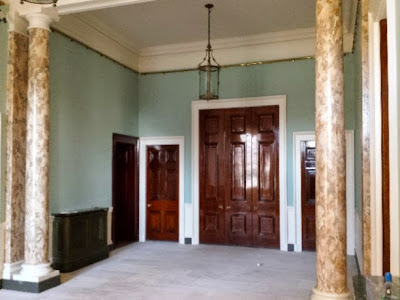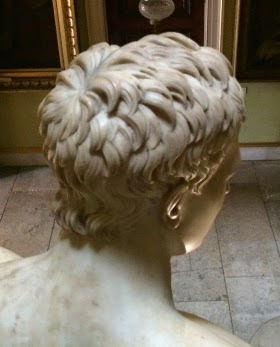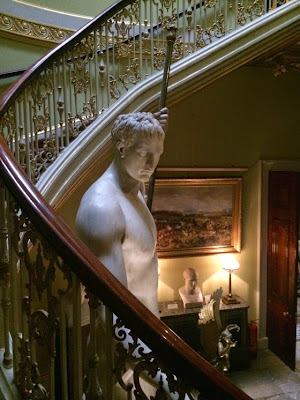Back in 2014, Number One London Tours organized a Duke of Wellington Tour which, I’m pleased to recall, was a resounding success. Our first stop was, fittingly, Number One London, the town house of the 1st Duke of Wellington, also known as Apsley House. We arrived before public hours in order to take a private tour given by Christopher Small, who kindly agreed to let us photograph the interior of the house, which is otherwise prohibited.
For the Apsley House wsebite at English Heritage, click here. The website has an excellent timeline on the history of the house from its original construction by architect Robert Adam (1728-92) in 1771 for Henry Bathurst, Lord Apsley, to its present day status as The Wellington Museum.
First Christopher took us to see the many gifts and awards the Duke received from grateful governments and monarchs. Here are just a few from the several rooms full of treasure.
Arriving at the gigantic statue of Napoleon by Canova, one is amazed first by its size, then by its placement in Apsley House (home of Napoleon’s conqueror), then by the complete lack of resemblance to what we know of Napoleon’s physique: short and stout — and with no waistcoat into which he could insert his hand.
Canova sculpted this image of Napoleon as Mars the Peacemaker between 1802 and 1806. It is said that Napoleon disliked this statue and had it placed in the basement of the Louvre. He found it disrespectful. The British government purchased the statue for 66,000 Francs in 1816; the Prince Regent gave it to Wellington, who then had to find a place for it. The floor beneath the statue had to be reinforced in order to hold the heavy marble work, over eleven feet in height.
The graceful curving staircase is part of the original Adam design. Personally, this is one of my favourite features of the house and each time I visit, I contemplate all of the great and good of bygone eras whose hands touched the banisters. On the principal floor (up one flight) there are four drawing rooms, the State dining room, and the Waterloo Gallery.
Designed in 1774 by Robert Adam, his fireplace, frieze and ceiling ornament remain.




Sigh. I want to go back!
According to the British physician who led the post-mortem examination, Napoleon's height was 1 meter and 70 centimeters. Not exactly short by the standars of his time.
He was 51 years old when he died, almost 30 years after being in his twenties with a physique totally opposite to being stout.
All it takes is a few minutes to see, via Google, his pictures at e.g. the Battle of Arcola……….
Maria – 5' 7" was certainly not tiny for the day. Wellington himself stood between 5' 9 and 5' 10. No doubt Napoleon was fighting trim in his younger days. However, in the context of Waterloo, people tend to remember Napoleon as he was depicted then, rather than as a triumphant young warrior holding aloft a flag whilst seated atop a rearing white horse. Likewise, Wellington will always be thought of as he looked at the time of Waterloo, rather than as the white haired and slightly stooped elder statesman he became afterwards. Alas, history is kinder to some than to others.